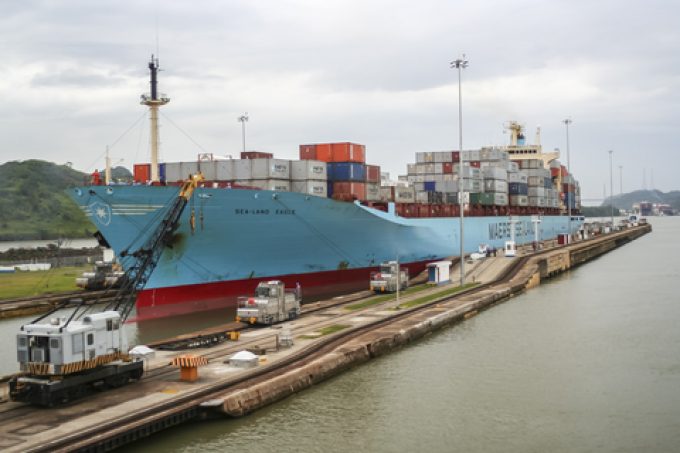Liners unveil Asia-Europe FAK price hikes to arrest steady rate decline
Container shipping lines are looking for a hike in Asia-Europe spot freight rates, announcing a ...

Maersk is to resume its OC1 Oceania-North America east coast string as an all-water service through the Panama Canal next month, dropping its use of the Isthmus rail land bridge link.
As rainy season approaches, Panama Canal Authority (ACP) has increased its daily transit limit to 27 from the 24 it had enforced in December.
Since its locks were expanded, the canal had capacity for 34 to 38 daily transits, but this was steadily reduced due to low water levels, as the country experienced one of its driest years, attributed to the El Nino phenomenon.
The Loadstar Premium reported in November that ACP had forecast a reduction in slots to 18 a day for February, but this did not happen and Panama is expecting steady rain fall this week and next.
“Based on the present and projected level of Gatun Lake, the Panama Canal announces an increase in the number of daily slots in the Panamax Locks,” said ACP.
As a result, Maersk’s OC1 service will return to its usual rotation of Philadelphia-Charleston-Panama Canal-Balboa-Tauranga-Sydney-Melbourne-Port Chalmers-Manzanillo-Cristobal-Cartagena, on 10 May.
Employing the rail corridor had transformed the OC1 into a two-loop set-up that meant containers headed east were unloaded at Balboa, crossed the isthmus by train to Manzanillo on the Atlantic coast and were loaded onto a vessel destined for Philadelphia and Charleston.
Maersk began using the Panama “land bridge” via the rail network in January, when the ACP intended to cut more than 50% of daily canal transits the following month.
This route meant the OC1 service had to omit the port of Cartagena, an important transhipment hub in Colombia. The Loadstar previously reported that other carriers had been apprehensive of using land transport to circumvent the Panama Canal restrictions due to the high costs. A Yang Ming spokesperson told The Loadstar land bridge options were not cost-effective.
“Land bridge movements account for just 10% of our US east coast services; because empty containers can only be transported back to Asia by seaborne transport, the cost of a land bridge is too high.
“A normal Panama transit will take 37 days, but with the diversion round the Cape of Good Hope, you add five to six days. Using a land option will take around 30 days, but add nearly $2,000 to the cost,” he explained.
Shippers and forwarders making use of Maersk’s OC1 service could expect see both rates and lead times drop when it returns to the Panama Canal.
Comment on this article